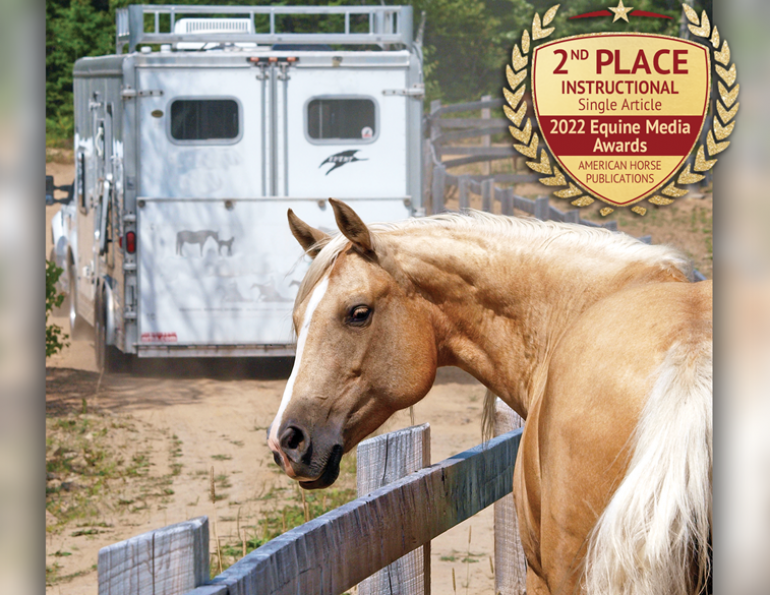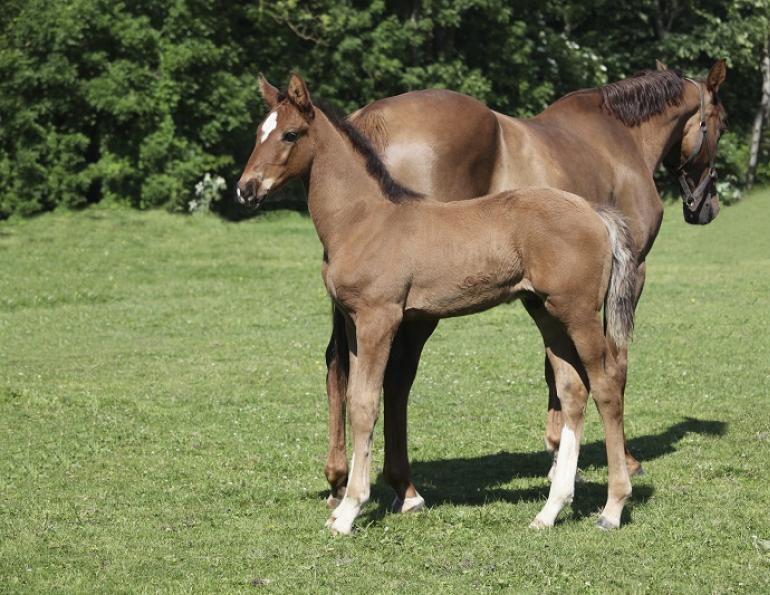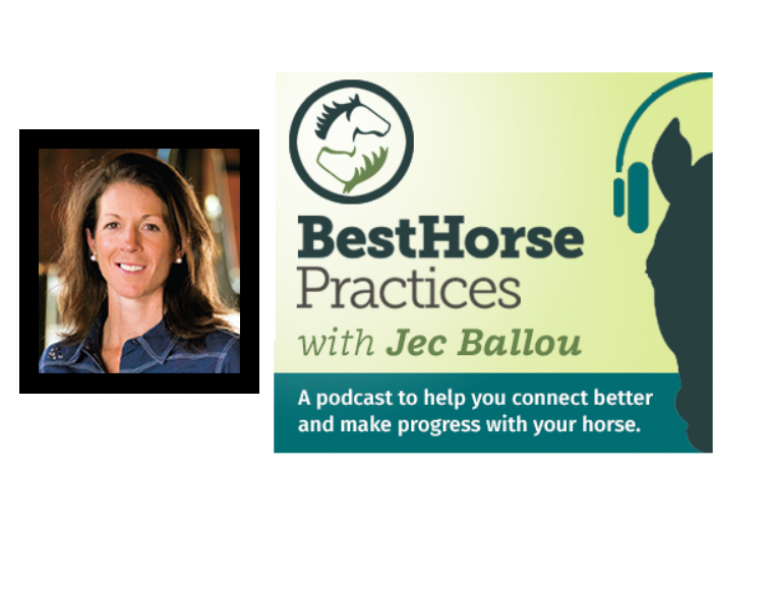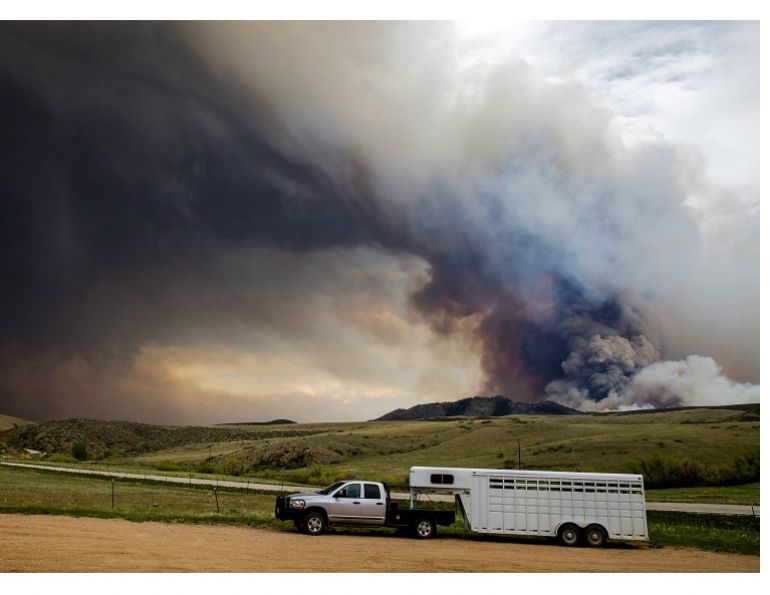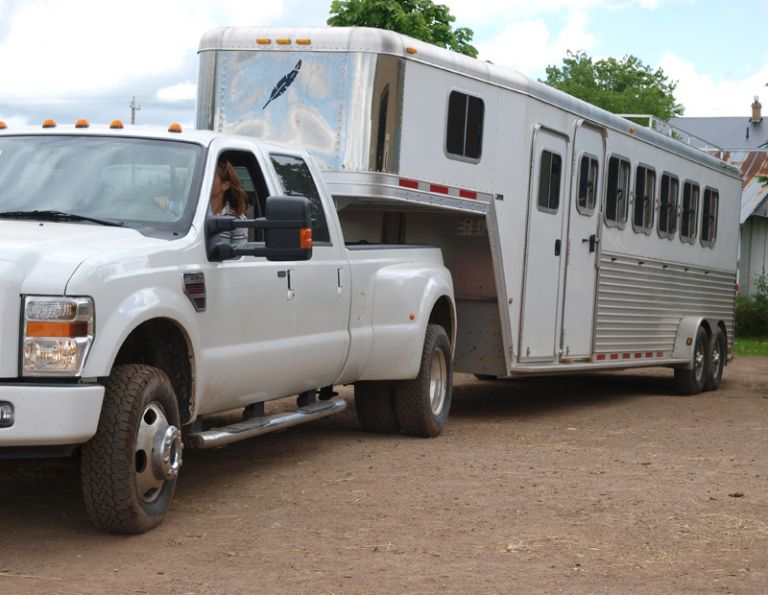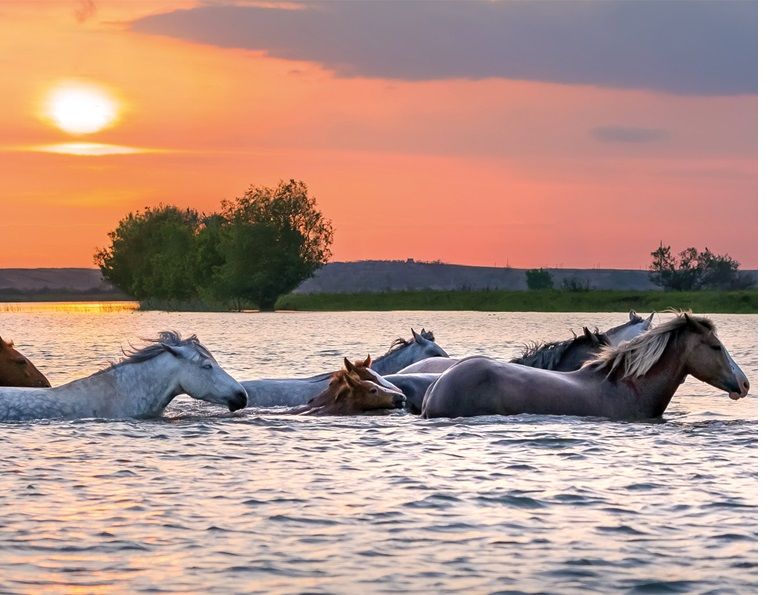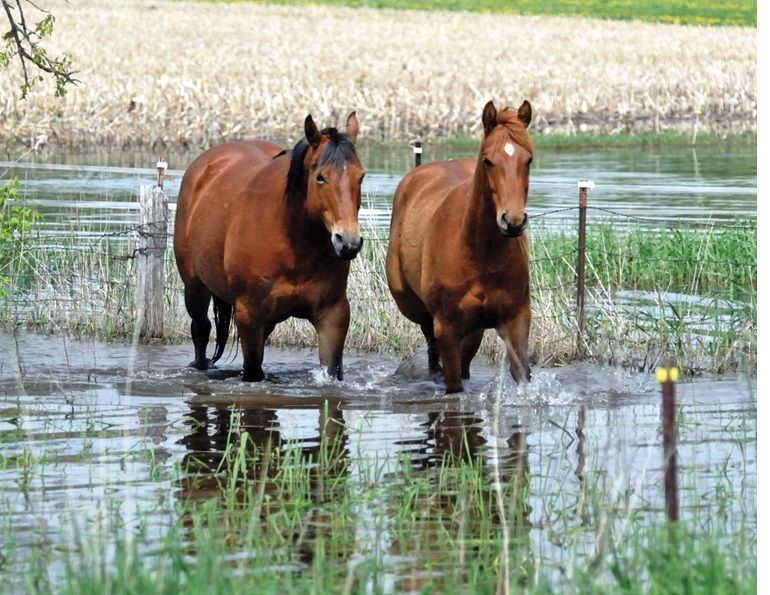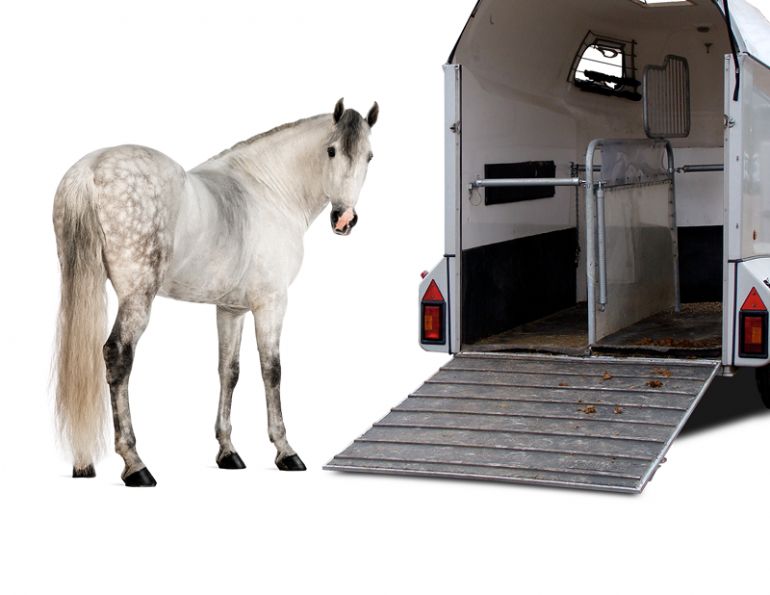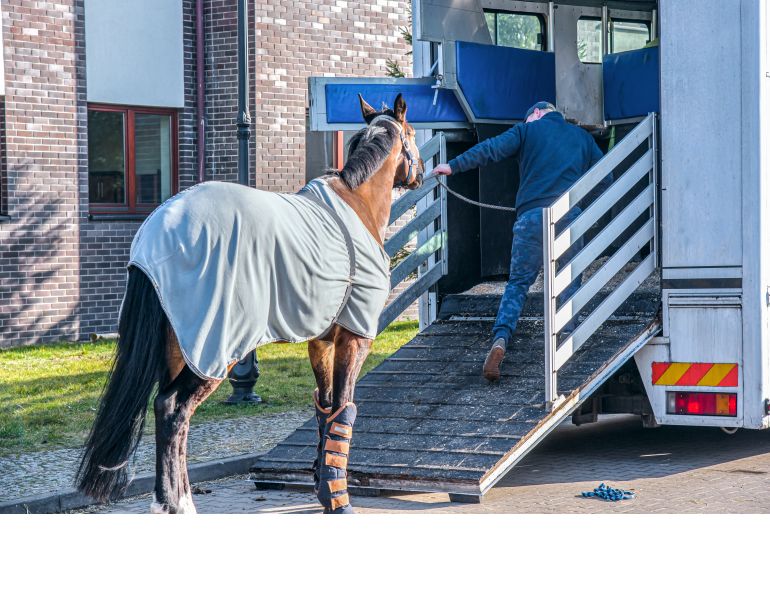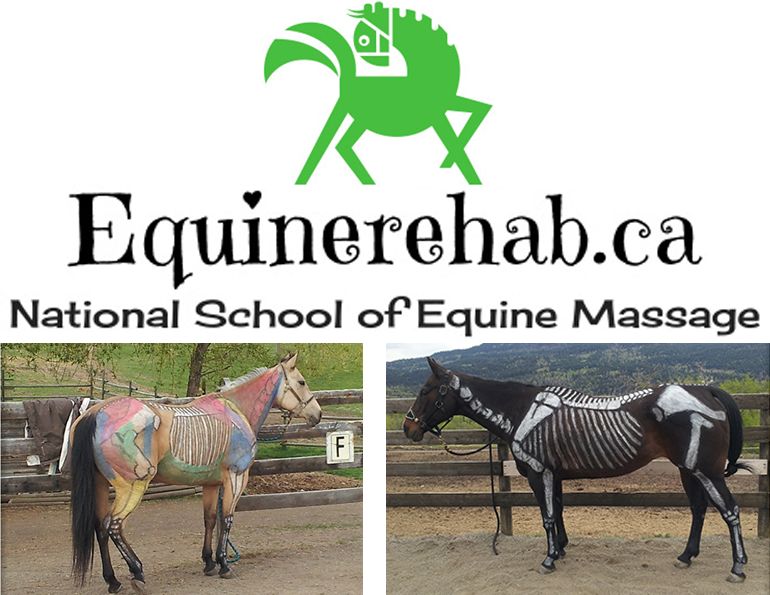By Kevan Garecki
To help you understand what your horse experiences during transport he might suggest that you stand inside the horse trailer, with your hands in your pockets and your eyes closed, while he drives you around.
I knew someone who considered himself to be an extraordinary driver, yet the horses he hauled always had more than their fair share of mysterious nicks and bumps, and every horse that stepped off his rig was sweated. I tried to tell him that it isn’t about handling his rig as if it’s a sports car; it’s about providing the horses in his rig with the most comfortable ride possible. He scoffed and pooh-poohed this until one day I’d had enough. I opened my trailer door and asked him to step inside on the pretense of helping me with a divider. Once he was in, I latched the door from the outside and said, “See you in 15 minutes.” Then I took him for a rather spirited drive. He stepped out with a very different mindset about how to haul a horse trailer.
Let’s think about this for a moment. Humans get inside a trailer and know what to expect. We recognize the sound of a passing tractor-trailer or the siren of an emergency vehicle, and we understand all the sounds caused by the bumps, cracks, and rain on the road. If we know all these things, how can that 15-minute ride still be terrifying? Because during the trip our safety and well-being is entirely in someone else’s hands. We don’t know where we’re going or when to brace for changes of direction, and we’re not able to anticipate a swerve or braking action.
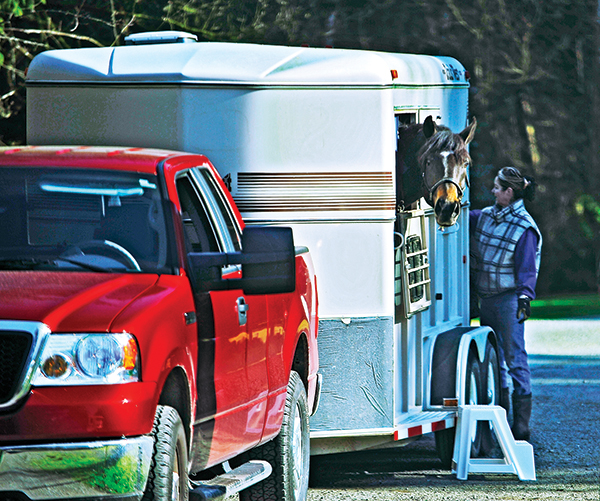
When a horse steps inside a trailer, our job is to give him the safest and most comfortable ride possible. Photo: Mane Frame Photography
My first driving mentor had a simple but very effective teaching method. He’d place an open cup of coffee on the metal dashboard of the old truck we drove back then, and tell me to drive without spilling it. I got really good, really fast! When hauling horses, if you drive as if you’re trying not to spill a cup of hot coffee sitting open on the dashboard, the horses behind you will get the best ride possible. This is the exact approach I use when teaching my students.

When hauling horses, drive as if you’re trying not to spill a cup of hot coffee sitting open on the dashboard. Photo: Shutterstock/Nazmanm
Cornering should be done with deliberation and planning. Don’t wait until you’re half a block from the turn before braking. Begin a block or so early by easing off the throttle, then softly apply the brakes, increasing the pressure gradually. Releasing the brakes should be done just as smoothly, and your foot should be completely off the brake pedal before you enter the turn. But don’t just let the pedal pop back up - ease your foot off.
A common misconception about angle-haul trailers is that folks believe they’re more stable, so when pulling an angle-haul they tend to drive as if they’re driving a car. Angle-haul trailers do not eliminate the need for balance; in fact, in many situations horses have considerably less control in an angle-haul than when standing in line with the direction of travel.
We all talk about balance when we’re riding, but should also consider the horse’s balance when in the trailer. Road surfaces are canted to allow for water runoff, so when we change from the right lane to the left lane, the horse will have to compensate for the change in the angle of the floor. The difference is harder for us to detect as we’re sitting down as this occurs. When standing, our centre of gravity is much higher, and we don’t have the security of the seat to hold us in place.
Every driver thinks they’re in the top five percent of “good drivers.” The two most important lessons I’ve learned in over 45 years of driving are: I’ll never drive as well as I think I do; and the more I improve my driving, the more I realize how much I don’t know.
We can always improve, and we can always learn something.
Tips and Tricks From the Pros
Even though driving is my profession and many people have complimented me on my skill, I am not a natural behind the wheel. I have had to work hard at every technique I’ve ever learned. Yet, doing so has made me more aware, and hopefully made me a safer and more competent driver. Fellow professionals have shared with me similar admissions about their own driving.
Related: Inside Your Horse Trailer
Over the years, I’ve learned many techniques for the various tasks we faced on the road. More importantly, I have unlearned some habits that I discovered were either ineffective, or just downright unsafe.
Here are a few tidbits of hard-earned wisdom:
Awareness — The single most prevalent condition I’ve seen in non-professional drivers is ignorance. Most have little idea of the dynamics involved when trailering, and very few are interested in finding out what they don’t know. At the very least, understand that when you attach a trailer loaded with three or four horses behind your truck, you’re now pulling at least twice the weight of the tow vehicle itself. That trailer is higher and wider than the truck, and even when empty can assert considerable force and stress on the tow vehicle. More importantly, those are living, breathing, thinking beings in the trailer. They get scared, feel pain, and need reassurance from us that all those scary things we do to them won’t harm them. The best reassurance we can give our horses is to raise our level of alertness and always drive defensively.
Following Distance — The two-second rule is acceptable for ideal driving conditions with most common passenger vehicles. It is wholly inadequate when trailering. When the weight of a vehicle is doubled, the stopping distance is doubled.
Take this show out on the freeway and the problem increases exponentially. When the speed of a vehicle is doubled, the stopping distance is quadrupled. That’s right — it takes four times longer to stop from 100 km/h than from 50 km/h. Take your horse trailer out on the freeway and you’re in for a surprise when you try to stop in a hurry, because when the weight and speed are doubled it takes eight times longer to stop!
Keep in mind that these calculations are under the ideal conditions of a dry, smooth road; excellent vehicle condition; and a fully alert driver. Under adverse conditions, it is not unusual to require 12 to 14 seconds time lapse between you and the vehicle ahead.
Related: How to Load Your Horse into a Trailer
Always Leave Yourself an “Out” — Ensuring adequate space ahead of you is only half the battle. We never know when we’ll need a way out or where we’ll need to go, so protect the space beside and behind you as well. Avoid the driver who lingers alongside the trailer by simply slowing down to let them pass. When nearing a freeway on-ramp, watch for merging traffic and either adjust your speed to reduce congestion or change lanes to allow merging traffic a clear path onto the freeway. Look for spaces, not obstructions. By looking for the space we need instead of focusing on the traffic itself, we tend to ease towards those spaces we need for safety.
Plan Ahead, Look Ahead — Looking ahead to anticipate signal changes, traffic patterns, and appropriate adjustments to minimize slowdowns is one way the real professionals make themselves “invisible.” We can use these techniques to make the trip as smooth as possible for the horses with us in the trailer. Anticipate stale traffic lights, slow down early, and in most cases you will avoid having to come to a complete stop. Easing off the accelerator early for turns and curves can all but eliminate the common jerk from actuation of the electric brakes in most horse trailers. The less often those horses need to brace against turning and braking actions, the more comfortable they will be, and their stress level will be reduced.
Don’t Get “Zoned” — We tend to get lazy now and then, and stare straight ahead when we drive, and in doing so can hypnotize ourselves quite easily. Anyone who has driven a long stretch of straight highway can attest to how easily this can happen. The best way I’ve found to avoid this is to keep the eyes moving. Never rest on any one area for more than a few seconds. I get into a routine when I’m driving; a glance in the right mirror, then look ahead; a peek in the left mirror, look ahead; peruse the instruments, look ahead again. I save some time for checking the trailer monitor as well, but keep these to short snapshots, thereby never averting my attention from the road for more than a second at any one time.
By keeping your eyes moving you stay more alert, with the bonus that not much will sneak up on you because you’re always aware of what’s going on around you.
Setting Up and Getting Comfy — One of the first exercises I walk my students through is how and where to sit, and how to adjust the mirrors. This may seem elementary, but when I was doing road tests for the Insurance Corporation of British Columbia, this was by far the most common shortfall when people were trying to negotiate traffic. It often resulted in the applicant not qualifying when doing a simple exercise, even though the rest of their driving was excellent.
Take a seat in the cab and relax:
- Your back should be flat against the seat back with your spine on roughly a ten-degree angle from vertical;
- The seat cushion should support your legs evenly along the length of your thighs;
- You should be able to place both feet flat on the floor directly in front of the seat.
Now reach for the wheel:
- Hold the wheel, not at the classic “10-and-2 o’clock” position, but at a more comfortable and safe “9-and-3” position. The bend in your elbows should be approximately 30 degrees;
- Your hands should not be higher than your shoulders;
- You should be able to make a complete circle of the wheel comfortably by steering hand over hand from the top of the wheel. NEVER steer underhanded from inside the wheel.
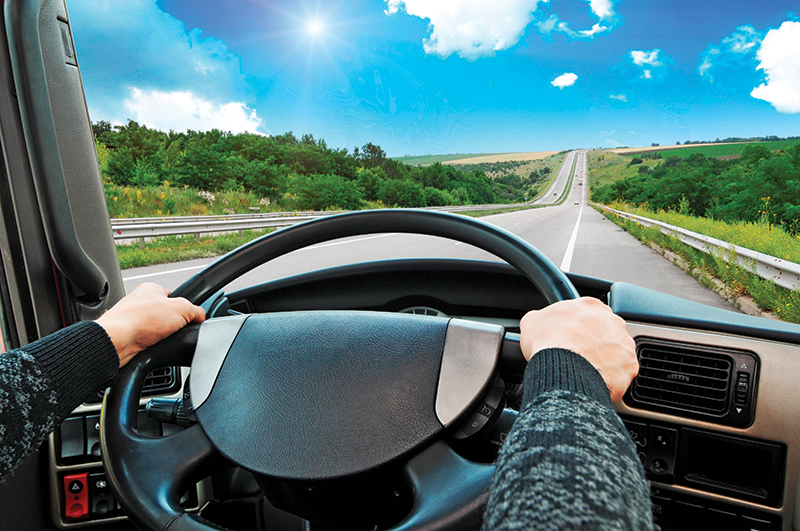
Hands on the steering wheel should be at the 9-and-3 o’clock position. Photo: Shutterstock/DmytroPerov
Mirrors
Side view mirrors are aids that allow us to see what’s going on beside and ultimately behind the vehicle. We don’t really need them to help us see where the vehicle itself is, and I’ll explain this in detail below. Incorrect mirror adjustment makes negotiating lane changes more difficult, backing nearly impossible, and skew your perception of lane position and distance from other objects. You may need to adjust your mirrors twice — once with the tow vehicle by itself, and again with the trailer hooked up and in a straight line.
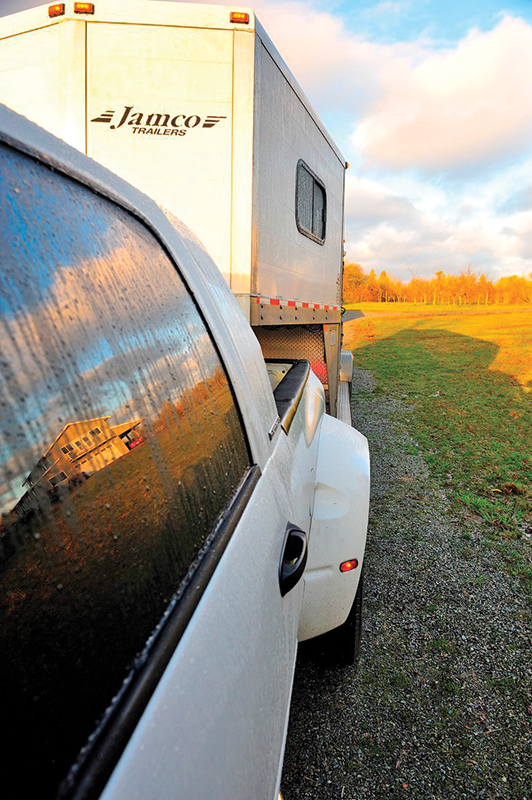
Mirrors should be adjusted with the tow vehicle hooked up and in a straight line, and while sitting in the proper driving position. Photo: Mane Frame Photography
When adjusting the mirrors, enlist the help of an assistant unless you have power mirrors. Sitting in your newfound comfy spot, head straight up, turn your head slightly to the left, just enough to catch a view of the driver’s side mirror. Adjust the mirror in or out until all you see is a sliver of the left side of the truck at the very inside edge of the mirror — you should see just enough of the truck body to put it in relation to the big, scary world beside you.
Repeat the process for the right side.
Assuming you’ve not left your comfy position (and that’s why you have a helper), you should still be in the ideal spot behind the wheel. Now vertically adjust the driver’s mirror carefully until the centre meets the horizon; you should end up with the bottom half of the mirror showing you where the planet is, and the top half showing you where the birds live.
The right side may require slight variations in adjustment depending on whether the right mirror is made of flat glass or is the common convex style. If your mirror has a small opaque warning lettered across the bottom of the lens telling you that stuff looks closer than it really is, the mirror is the convex sort. If no warning, the glass is quite likely flat.
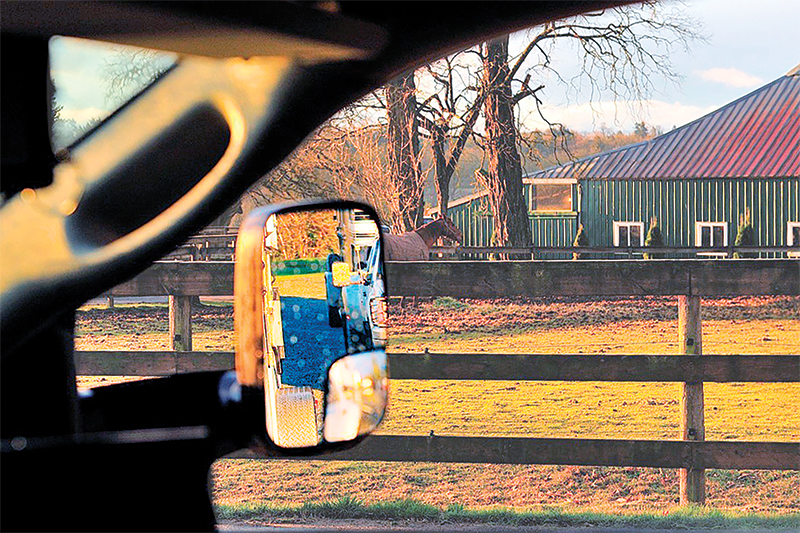
Related: Questions to Ask a Commercial Horse Transporter
If flat, raise or lower the mirror until the horizon is approximately two-thirds of the way up the lens. Same reasoning here as for the above with this adjustment.
If your tow vehicle is equipped with wide-angle convex mirrors that are adjustable independently of the main mirrors, repeat the same process as above, but remember that the wider angle lens is meant to show you what you may not be able to see in the main mirror, so try not to duplicate views in both mirrors.
What all this should give you is the largest view of what is beside you, offer a workable compromise for seeing what’s out back, and allow you to take advantage of the vista by moving your head only slightly to either side to take it all in.
All of this will NOT make you a better driver. Rather, it will give you the best view of the spaces beside and behind you, which will help you become the best driver you can be!
Related: How to Choose a Commercial Horse Hauler
Related: Horse Trailer Accidents on the Road
Photo: Pam MacKenzie



